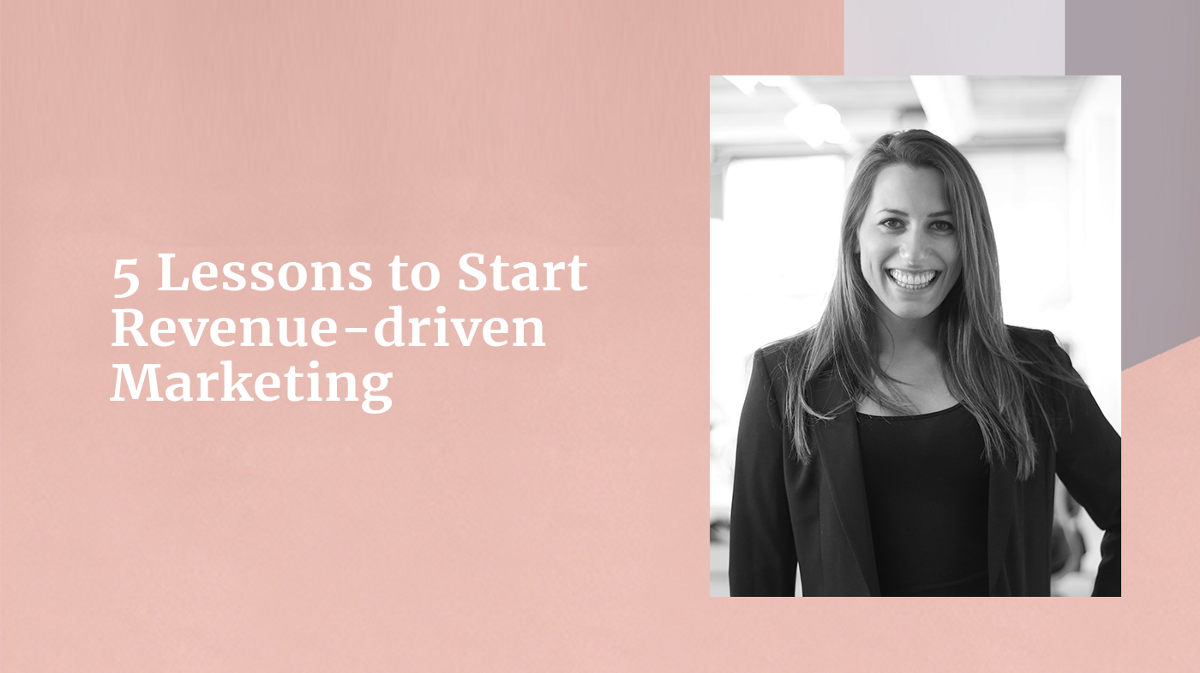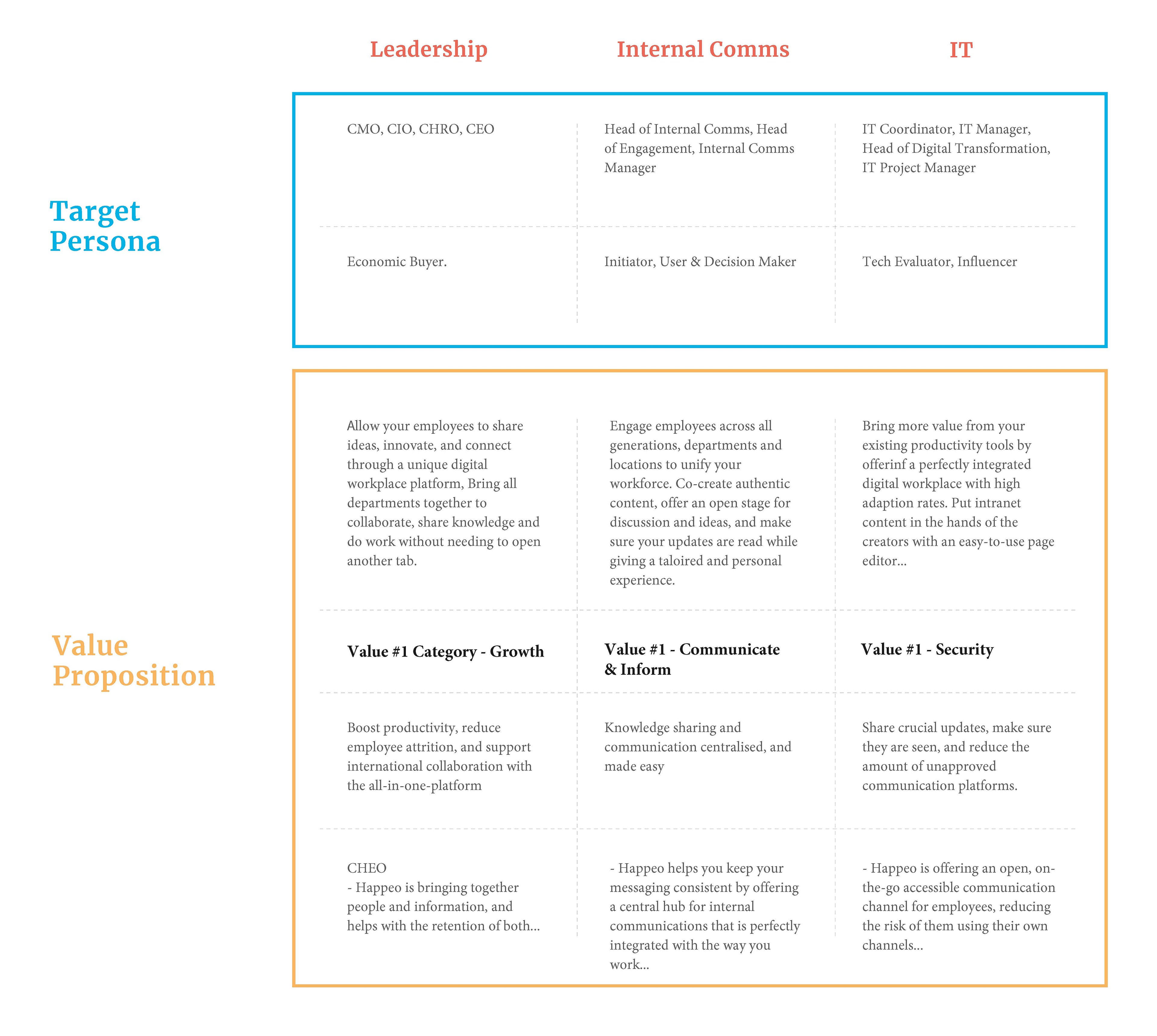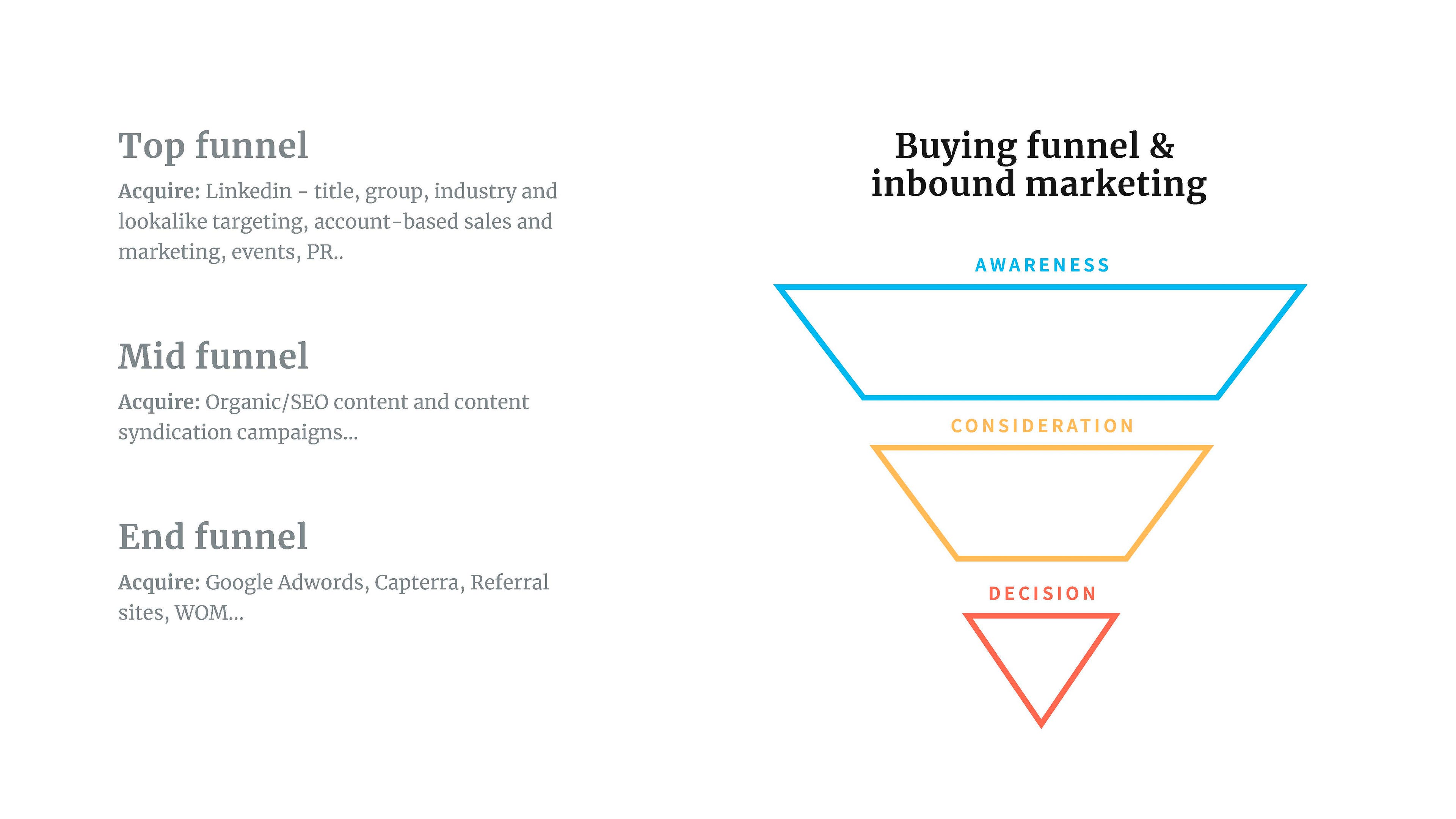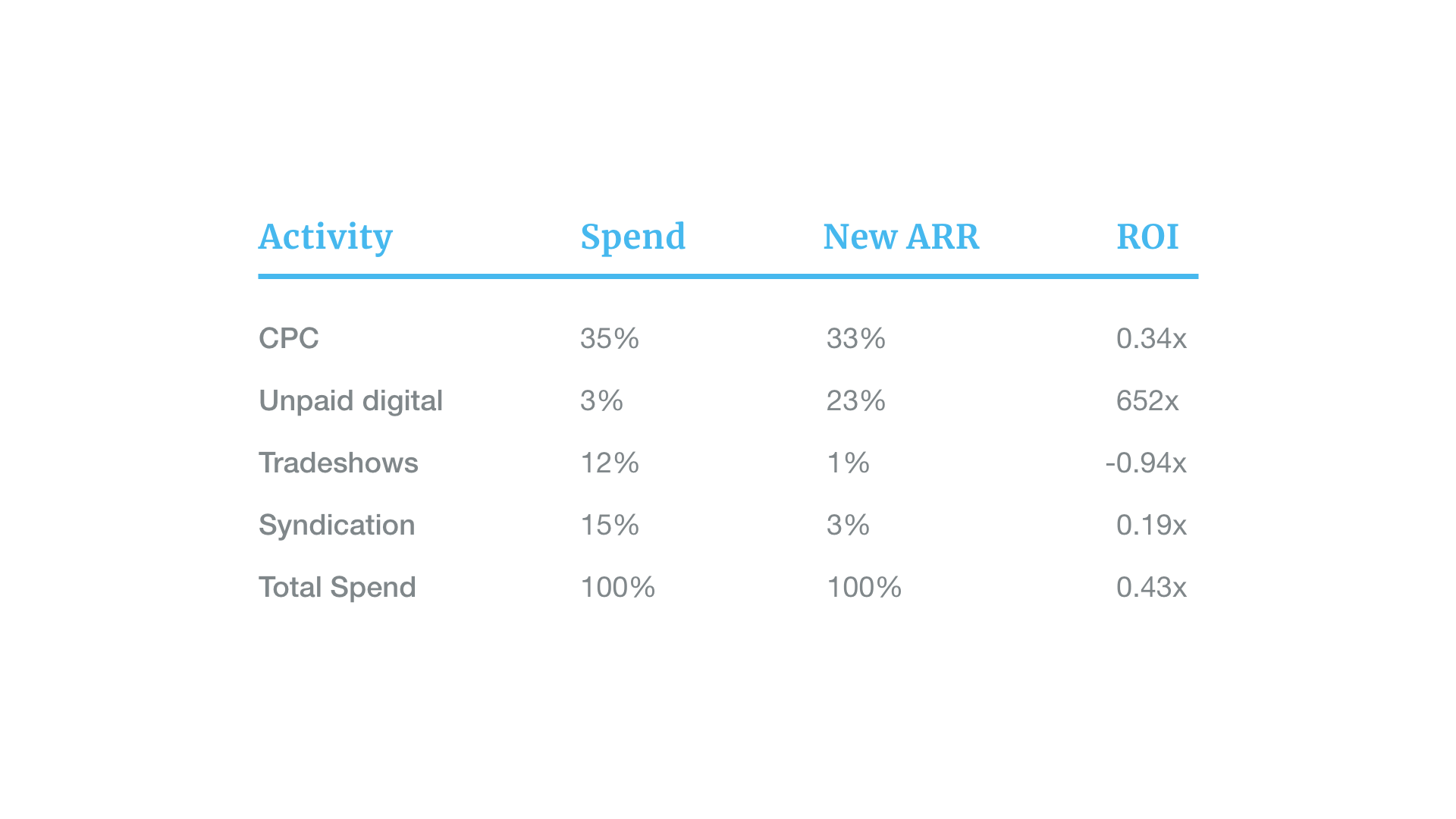Maria 01, Building 5, entrance B
Lapinlahdenkatu 16, 00180 Helsinki
Making history? lets@maki.vc
Press inquiries: press@maki.vc
Blog | May 25, 2020

Lidia Lüttin is the CMO at Happeo, a social intranet with over 300,000 users and engagement rates comparable to popular social media platforms. Before Happeo, Lidia joined Dutch startup-turned-scaleup Bynder as their fourth employee to build their marketing function. During her time there, 80% of the company’s revenue was generated through inbound marketing. She’s proved that marketing can be the main driver of growth — and now she shares her learnings on how to make your company’s marketing revenue-driven._
Most of you have (hopefully) found product-market-fit, which means you’re able to solve a problem for your customers. Next, you need to find what I like to call messaging-customer-fit. This means finding the right wording for the story you’re about to tell your customers — you want to avoid a situation where Marketing is telling story A, Sales is pitching story B and your CEO is off talking about something completely different. You need to speak one common language, and that should be the language of your clients.
I like to start by creating a value messaging map — a basic overview of your buyer persona, the stakeholders of the buying process and who’s making the decision. The map should also specify who your target client is and who they are not. Most importantly, it should contain value propositions for each of the stakeholders in the process. Once you’ve created a value messaging map, make sure that everyone in the organization knows it by heart.
Want to get up to speed even faster? Don’t try to do this alone with your team, talk with your customers instead. Schedule interviews and prepare a comprehensive question list about the product and your interviewees’ jobs (our list included + 30 questions). This way you can learn to speak to your customers using their own language and sound like a peer instead of a sales robot.

Once you’ve found the right language to communicate with, you’re ready to move on to demand generation. Let’s start with the basics: in the first stage of the buying funnel is awareness, i.e. when your potential customer has a specific problem and starts doing research to find the solution. Next is the consideration stage where a potential customer has found a possible solution to their problem. Finally comes the decision stage, where the customer lists potential vendors and signs up for trials and demos.
When you start with demand generation it’s all about focus — because you only have limited resources, avoid targeting the whole funnel and focus only on the decision stage. Focus on the high intent buyer and make sure that people who are currently looking for a tool like yours find you. To achieve this, ensure that your website has basic call-to-actions, you speak only to your main buyer persona, and you’re creating and sharing content that helps your customers compare your product to others.

Nobody cares about your blog post. That’s the hard truth if you don’t belong to the top percentile of startups who actually manage to pull up a great blog that drives traffic, leads, and actual revenue, so it might not be worth spending your limited resources on a blog. Luckily, there’s more to content marketing than just writing blog posts, which is why you need a content marketing strategy. Happeo’s is split into three main pillars for which we have different goals:
Our first goal is to scale demand generation and push organic searches to the second strongest lead channel, making sure we’re creating a lot of SEO content, which we promote to get links back to our website and increase our organic rankings.
In sales enablement our goal is to help sales close deals and increase new business win rates, so we create content that helps them prove value to other people in the buying cycle. Finally, we want to position Happeo as our category’s thought leader by working together with industry influencers to produce podcasts or get visibility in industry-relevant publications.

Make your marketing measurable. If you manage to map your lead and sales process correctly in the CRM, you can actually obtain a lot of data that helps you answer business-critical questions, such as what is your payback period, why is growth slowing down, and should you make an additional marketing hire. Since “measure your marketing” is often thrown around as a mantra without much deeper thought, I wanted to provide you with a concrete example of how Happeo measures the effectiveness of marketing so here’s an example of our marketing KPI dashboard. In short, we set targets for the number of SQL, pipeline sourced, and revenue sourced.
Revenue-driven marketing means that marketing contributes and answers to real sales numbers and not just vanity metrics such as awareness, lead velocity, or engagement. Why is this important? Because as we saw in the sales funnel, above, not all leads are equally strong. If marketing has a target of increasing leads by 10% month over a given month, it can be an easy target for them to reach, but it doesn’t mean they’ve generated 10% more in sales. Not realizing this can be dangerous.
That’s why I recommend that marketing measures the ROI of different channels, prioritizes them based on this, and most importantly, shares their targets with sales. Below is an example of how objectives and key results could be structured:

This was a starter to revenue-driven marketing. If you would like to see more examples and tools, click here to see the resources that Lidia has put together!